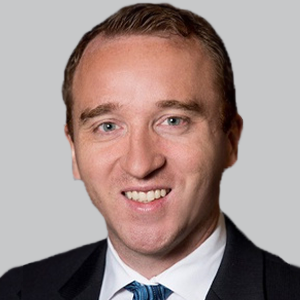Article
Hemispherectomy Similarly Safe, Effective in Adults and Children With Epilepsy
Author(s):
Study findings have shown sustained improvements in seizure-freedom rates and functional outcomes in a cohort of adults that mirror prior findings in pediatric populations.
Robert A. McGovern, MD, assistant professor of neurosurgery, University of Minnesota Medical School

Robert A. McGovern, MD
New study findings suggest that hemispherectomy is both safe and effective for adults with epilepsy, with data suggesting similar seizure freedom rates and functional outcomes to those observed in children.1
Engel class I outcomes—defined as seizure freedom or no more than a few early, nondisabling seizures—were present in 77% (n = 36) of patients after a mean follow-up of 5.3 years post-surgery (median, 2.9). As well, seizure freedom was observed in the majority of patients at all time points, with stable outcomes out to as far as 12 years post-procedure.
“This experience demonstrates that seizure outcomes in adults undergoing hemispherectomy are similar to the results seen in children,” the authors wrote. “Whereas patients with preserved hand function and cerebral peduncle size on MRI will almost certainly experience postoperative worsening, ambulatory status and gross motor function are typically unchanged. Finally, adult hemispherectomy patients can expect their cognition to be relatively unchanged after surgery.”
Additionally, data suggest that acute postoperative seizures (0.06 [95% CI, 0.01—0.93]; P = .04) and contralateral interictal spikes (0.01 [95% CI, 0.001­—0.21]; P = .0066) on 6‐month follow‐up electroencephalography (EEG) were poor prognostic indicators and thus likely indicative of residual or contralateral epileptogenicity, respectively.
Conducted by Robert A. McGovern, MD, assistant professor of neurosurgery, University of Minnesota Medical School, and colleagues, the study included 47 patients, including 36 older than 18 years and 11 between ages 16 and 18 years. In total, 87% (n = 41) of patients experienced hemispheric epilepsy caused by brain injury. Notably, of the 19 patients who completed neuropsychological testing, 17 demonstrated stable or improved postoperative outcomes.
Longitudinal outcome analysis showed that 84% of the cohort had seizure freedom (Engel class IA) at 6 months, maintained at 76% at 2 years and 76% at 5 years and beyond. This was comparable to similar analysis of a pediatric population of 1161 patients, which showed 73% overall seizure freedom, and was comparable to longitudinal outcomes of a pediatric hemispherectomy series at the study center, Cleveland Clinic, which showed rates of 78% at 6 months, 71% at 2 years, and 63% at 5 years and beyond.2,3
“The similarities in functional outcome also suggest that the neural plasticity and language transfer across hemispheres are determined by the age at brain injury rather than the age at surgery,” McGovern and colleagues wrote.
Patients who could walk unaided (unchanged: 61% [20 of 33 patients]; worsened: 39% [13 of 33 patients]; P = .02) preoperatively with no peduncle atrophy (unchanged, 0% [0 of 4 patients]; worsened: 100% [4 of 4 patients]; P = .0089) were much more likely to experience worsening postoperatively. Similarly, better preoperative hand function (unchanged: 0% [0 of 6 patients]; worsened: 100% [6 of 6 patients]; P <.0001) and mild or no cerebral peduncle atrophy (unchanged: 0% [0 of 4 patients]; worsened: 100% [4 of 4 patients]; P = .0018) on MRI predicted worsened hand function postoperatively.
“Although performing hemispherectomy earlier in life is likely to lead to better motor outcomes, our study shows that it can still be safe to do so in adulthood, depending on the MRI and preoperative functional status of the individual,” McGovern and colleagues detailed.
REFERENCES
1. McGovern RA, Moosa ANV, Jehi L, et al. Hemispherectomy in adults and adolescents: Seizure and functional outcomes in 47 patients. Epilepsia. Published online November 2, 2019. Accessed November 8, 2019. doi: 10.1111/epi.16378.
2. Griessenauer CJ, Salam S, Hendrix P, et al. Hemispherectomy for treatment of refractory epilepsy in the pediatric age group: a systematic review. J Neurosurg Pediatr. 2015;15:34—44.
3. Moosa AN, Gupta A, Jehi L, et al. Longitudinal seizure outcome and prognostic predictors after hemispherectomy in 170 children. Neurology. 2013;80:253—60





